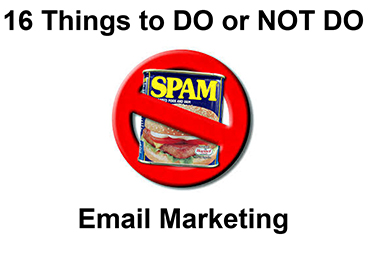Spam email has been around almost as long as email itself, which is a long time. In fact, many people forget what it was like before email.
But as soon as email hit the mainstream, people started using it for advertising. It seemed like everyone, who was too lazy to go out and meet prospects in their everyday lives, resorted to email as their passive alternative to active marketing.
Remember, “to have what others don’t have, do what others are unable or unwilling to do”. That means you should always go out and do the work.
Spam email worked at first. Then it got so bad that spam filters and services became the new accelerated wave of innovation. There were filters and pass-through services, and even paid, totally encrypted, email services like Proton or Reagan. The CAN-SPAM Act was signed into law by President George W. Bush in December of 2003 and requires the Federal Trade Commission (FTC) to enforce it.

***side note***
I’m sure Hormel isn’t happy with the world calling unwanted emails by the same name as its magical mystery meat. A bit of etymological sidetracking taught me that SPAM, as it relates to junk email, stems from the late 1980s and the MUD community (multi-user dungeon). The full article is here (https://www.templetons.com/brad/spamterm.html) thanks to Brad Templeton… but it all boils down to online groups involved in shared environment chats or gaming, like dungeons and dragons. They coined the term to mean someone who would flood the system with junk data. Perhaps the massive amounts of mystery meat in cans was a metaphor further brought into being by an old Monty Python skit where a group of Vikings starts singing “Spam, spam, spam, spam, etc until told to be quiet. So, in that context, it was related to an annoyance.
So, now SPAM isn’t just for breakfast. It’s flooding into my email inbox all day long!
Ok, so back to the “meat” of this article. Tips for what to do and not do when email advertising. I changed the list from the original, but the inspiration came from
(Marketo, 2020) file:///C:/Users/wbronson/Downloads/16-Email-Rules-you-Absolutely-Have-to-Break-Marketo.pdf
- STOP using words like “free” or “deal” or “discount” in the email subject line.
- ALWAYS keep your email subject lines between 30 and 50 characters.
- ALWAYS use double opt-in when growing your list.
- STOP using a pop-up (or pop-over) to collect email addresses on your website. (ANNOYING)
- STOP sending a mostly-text email. (BORING)
- STOP sending a mostly-image email. (NOT ENGAGING)
- STOP sending an email with one big image.
- ALWAYS have a good balance of images to text.
- STOP sending “ugly” emails. If you don’t care enough to craft a well thought out email, don’t expect people to care about reading it.
- ALWAYS have fun. Life is short. Don’t waste it being so serious all the time.
- STOP using ALL CAPS in an email subject line.
- STOP using animated gifs in the body of an email. (the EARLY 90s)
- STOP placing the unsubscribe button or link at the top of an email (or making it too pronounced. It’s not a “call to action”).
- ALWAYS send an email during the middle of the week.
- STOP sending campaigns at the end of the day.
- STOP sending more than one email per day. And consider only sending one a week or every other week. The only thing worse than people not knowing about your business, product, or service is people getting tired of your business, product, or service. (OUCH)
So, I hope this list helps you get better results from your email marketing. Let me know how it goes or if you have any questions.
Our marketing team is here to help you fill up your day with appointments, so let’s brainstorm.




